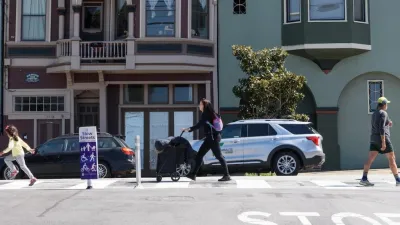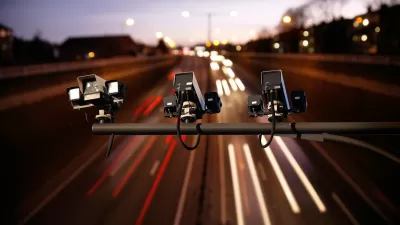"Complete Streets" policies are a good start, but only a start.
One pro-pedestrian, pro-bicyclist trend is the rise of "Complete Streets" policies. Even car-dependent Houston plans to adopt such a policy. That city's mayor has drafted an executive order that defines "Complete Streets" as roads that "take into account all users." including pedestrians and bicyclists as well as drivers. The order further states that the city shall develop a transportation plan to direct street improvements, apparently with the goal of making streets more complete. However, the order does not dictate the contents of such a plan in any detail. The order also directs city planning officials to prepare an annual report to the mayor detailing data related to street improvements. The order does not tell officials exactly what data to collect, but mentions new sidewalks and bicycle facilities as the sort of improvements that might belong in the report.
It seems to me that this order doesn't do very much. First of all, it doesn't even mandate that the city's list of improvements includes new sidewalks, bike lanes, street trees etc. Second, even if the order had required the city to list new sidewalks or bicycle facilities, it would not require the construction of such facilities- just require that the city publish a list of what it was doing. In sum, Houston's ordinance seems to be more about procedure and full disclosure than about substantive policy.
Other ordinances are a bit more aggressive. For example, Indianapolis' ordinance states that the city's facilities shall be built so that "users of all ages and abilities shall travel safely and independently"- thus implying that people too young to drive should be able to travel independently. In addition, the law directs the city to "approach every transportation improvement ... as an opportunity to create safer, more accessible streets for all users."
But the law does not tell the city how to do this, other than by telling the city to "use the best and latest design standards available", incorporate unspecified "Complete Streets principles" in manuals, regulations and several other listed forms of rules, train staffers on nonmotorized transportation issues, and disclose the city's progress to the public in various ways. All of these provisions seem perfectly reasonable but quite general; the complete streets policy does not specify exactly how any of the city's streets should be reformed.
Moreover, the Indianapolis ordinance contains a joker in the deck: even if the Director of Public Works decided that a given change was mandated by the complete streets policy, he could ignore complete streets criteria if, in his or her judgment, "the application of Complete Streets principles is unnecessary, unduly cost prohibitive, or inappropriate because it would be contrary to public safety." Concepts such as "unneccessary" and "unduly cost prohibitive" seem to me to be a blank check for public officials.
Indianapolis' policy is the best in the nation according to a national complete streets organization. Yet even the Indianapolis policy does not tell decisionmakers exactly what the city's streets should look like or how to reform existing streets, and gives the city enormous discretion to ignore this already-vague policy. And perhaps this is as it should be, given the possible impracticality of retrofitting every single street in the city.
Complete streets policies are certainly better than nothing; by suggesting that decisionmakers should be biased in favor of complete streets, they might increase the number of pro-pedestrian, pro-bicyclist road improvements. But such broad policies are no substitute for the detail work of finding funding to widen sidewalks, install bike lanes, and otherwise make streets less dangerous for nondrivers.

Alabama: Trump Terminates Settlements for Black Communities Harmed By Raw Sewage
Trump deemed the landmark civil rights agreement “illegal DEI and environmental justice policy.”

Study: Maui’s Plan to Convert Vacation Rentals to Long-Term Housing Could Cause Nearly $1 Billion Economic Loss
The plan would reduce visitor accommodation by 25% resulting in 1,900 jobs lost.

Planetizen Federal Action Tracker
A weekly monitor of how Trump’s orders and actions are impacting planners and planning in America.

Wind Energy on the Rise Despite Federal Policy Reversal
The Trump administration is revoking federal support for renewable energy, but demand for new projects continues unabated.

Passengers Flock to Caltrain After Electrification
The new electric trains are running faster and more reliably, leading to strong ridership growth on the Bay Area rail system.

Texas Churches Rally Behind ‘Yes in God’s Back Yard’ Legislation
Religious leaders want the state to reduce zoning regulations to streamline leasing church-owned land to housing developers.
Urban Design for Planners 1: Software Tools
This six-course series explores essential urban design concepts using open source software and equips planners with the tools they need to participate fully in the urban design process.
Planning for Universal Design
Learn the tools for implementing Universal Design in planning regulations.
Caltrans
Smith Gee Studio
Institute for Housing and Urban Development Studies (IHS)
City of Grandview
Harvard GSD Executive Education
Toledo-Lucas County Plan Commissions
Salt Lake City
NYU Wagner Graduate School of Public Service






























